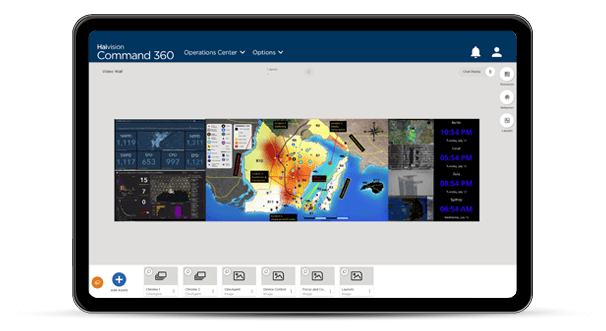Operational teams often face challenges to avoid duplication, overlap, fragmentation, and/or missed opportunities due to inefficient processes, poor communication, or limited resources. The potential negative consequences increase exponentially when multiple organizations are involved. Common objectives are poorly executed across multiple facilities and/or teams if there is an absence of effective collaboration.
Federal, state, private, and non-profit agencies grow increasingly more dependent on each other to maximize results with minimal resources. Public health and safety, emergency response, cybersecurity, utility, and defense initiatives benefit from interagency cooperation. Effective communication and information sharing does not just happen organically. Successful, results-oriented operations thrive within structured processes, executed on systems designed specifically for collaboration.
Where to Start?
The US Government Accountability Office has identified the leading practices for multi-agency collaboration. The recommended framework encourages organizations to:
- Define and articulate a common outcome.
- Establish mutually reinforcing or joint strategies.
- Identify and address needs by leveraging resources.
- Agree on roles and responsibilities.
- Establish compatible policies, procedures, and other means to operate across agency boundaries.
- Develop mechanisms to monitor, evaluate, and report on results.
- Reinforce agency accountability for collaborative efforts through agency plans and reports.
- Reinforce individual accountability for collaborative efforts through performance management systems.
The list is broad and perhaps overly simplified. Each of these objectives represent countless hours of discussion, development, planning, refining, and approval to launch. The long-term benefits, however, are certainly worth the investment. Once implemented, a strong protocol yields immeasurable results. As highlighted in the guide Implementing Cross-Agency Collaboration, improved performance through strategic coordination and communication allows organizations to tackle complicated and complex issues more effectively. With the right structure in place, multiple agencies can come together to create solutions for things like multi-layered social problems, cost savings to taxpayers, and improved services to citizens and businesses.
Most of the leading practices listed above require harmonization of concept-oriented roles, responsibilities, and policies. One directive stands out as a starting point from which teams can create a tangible path to meaningful collaboration.
Build Cross-Agency Operational Compatibility
Establishing compatible means of operation across agency boundaries is efficiently accomplished via technology-based solutions. The sharing of critical, visual intelligence to generate a common operating picture is integral to collaboration of any scope.
Haivision recently had the opportunity to design and install an advanced visual collaboration system for the East Metro Area Crime Center (EMACC) in Oxford, Alabama. The Oxford Police Department recognized the need for a centralized facility from which it could work with 23 neighboring federal, state, and local agencies.
At the heart of the crime center, you’ll find Haivision’s comprehensive, high performance visual intelligence platform. The fully integrated system incorporates powerful video processing and content sharing with CineNet, an intuitive, dynamic user interface. CineNet provides simple management of the numerous visual data sources monitored by EMACC personnel. Operators easily organize, share, and manipulate content to efficiently deliver the right information to the right people in real-time. Today, the EMACC enables these organizations to vigilantly combat human trafficking, gun violence, illegal drug operations, terrorist activity, and numerous threats to public safety.
The Delaware Valley Intelligence Center (DVIC) presents another great example of technology driven collaboration. The Philadelphia Police Department recognized early the need to pool resources and share information with other public safety organizations within the Delaware Valley region. They collaborated with state and federal law enforcement agencies to develop a fusion center in the City of Philadelphia with a mission to effectively safeguard the health, safety, and well-being of the communities it served.
As described by the Department of Homeland Security’s National Network of Fusion Centers Fact Sheet, fusion centers serve as primary focal points within the state and local environment. They create a central location for the receipt, analysis, gathering, and sharing of threat-related information among federal, state, local, tribal, and territorial partners.
The DVIC, like so many command and control centers, required 24/7/365 operation. The visual intelligence system had to be resilient, secure, and dynamic, with multi-location reach for simultaneous consumption of information. Once again, Haivision delivered a fully integrated collaboration solution. It not only streamlined the aggregation and analysis of data but keeps real-time situational awareness front and center for key decision makers.
The EMACC and DVIC are only two examples of how Haivision strives to deliver the best collaborative technology for our customers. For years we’ve had the privilege of working with frontline organizations in emergency response, public safety, national defense, and other mission-critical, multi-agency operations. Contact us today to learn more about our cutting-edge collaboration solutions.
